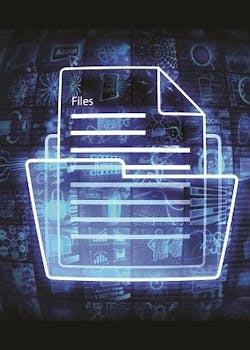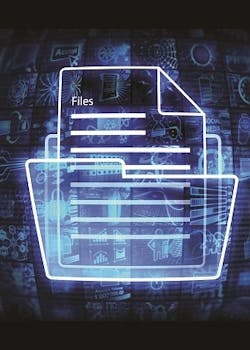Electronic Batch Records: Improving Compliance, Accelerating Time to Market
The pharmaceutical and biotechnology industries have been bound by strict regulations for a long time. In fact, few other industries must contend with such high levels of control, transparency and traceability. In pharmaceutical manufacturing, these high levels of compliance and quality are necessary to sustain business and uphold patient safety and confidence.
As part of those regulations, authorities require that records be kept of each batch of product that a company produces. The information held in batch records can be accessed during assessments and is used to confirm that the appropriate procedures are followed, material inventory is controlled, operators’ identities and training levels are verified, and the necessary quality checks are performed. It is also used to assess the effectiveness of continuing product improvement strategies and initiatives. For many companies, capturing this information is a challenging and imperfect manual process. Manufacturers that have successfully deployed information technology to improve efficiency in other domains have traditionally found batch record reporting difficult to automate.
As the power of computing has grown, software has evolved, the cost of digital storage space has shrunk, and the ingenuity of people in connecting information systems and databases has improved. Modern electronic batch record solutions are coming to market that can integrate with other enterprise systems to enable much better control over the capture and analysis of batch data.
Dangers of Outdated Documentation Methods
Why do most pharmaceutical manufacturers still use manual, paper-based processes to create batch records? The most likely answer is the simplicity of the solution. It’s easy to walk around a manufacturing facility with a pen and paper. This doesn’t require a lot of expensive equipment or complicated IT initiatives. Operators simply read values from dials and meters on production equipment or dispensing lot labels and fill in the values on a printed form on a clipboard.
Unfortunately, every step in a manual process is inefficient and at risk for error. This is significant for batch record documents, which tend to be very large and complex. Operators may incorrectly transcribe a reading, neglect to complete a required field or forget to include mandatory signatures or initials for an entry. Crucial attachments such as sample analysis can be delayed or lost. The entire paper record itself is subject to damage.
A lengthy verification process is necessary before the documentation can be approved to permit release of the batch. This can lead to batches of perfectly good product sitting in a warehouse waiting for the paperwork to catch up, which can take weeks. During that downtime, the cost of storage space accrues, delivery to market is delayed and time elapses on product expiration dates.
Modernizing Mission-Critical Reporting Practices
An electronic batch record system makes use of various databases that hold the data recorded during manufacture of a batch and a business process engine that defines the process to be followed. A user interface presents the necessary set of tasks and instructions to operators. This allows them to monitor activities and record applicable results. Integration among systems enables an electronic batch record system to be continually updated with information about environmental monitoring, test procedure execution, resource planning, manufacturing execution, product lifecycle and other knowledge about enterprise processes. This information becomes part of the batch record. Automated capture of this data reduces risk of error and is therefore more compliant with industry guidelines.
An integrated solution improves compliance and streamlines the creation of batch records so products can be delivered to market more quickly. It also provides a source for key data required for the annual product quality reviews that regulatory authorities require from manufacturers to confirm that processes are under control and that products are continually improved.
Completing these mandatory reviews is a demanding task that often leaves professionals scrambling for answers. How many batches did we make? What were the yields? Where were the deviations? What changes did we make? Were those changes effective? What happened on average across these products? For many companies, the reporting required to answer such questions can take a long time because the necessary information is spread across multiple disparate databases — or more usually in disparate stores of paper records.
An electronic batch record solution that is integrated with enterprise information systems can unite related data to automate analysis across the product development and manufacturing continuum. This can alleviate many inadequacies of paper-based batch reporting and free up professionals to devote their expertise to more valuable tasks.
Validity of master documents is at risk if users copy and print paper batch master templates from previous jobs. An electronic batch records system can provide a formally approved batch master document with a standardized structure. Companies have the ability to change the configuration of that structure for their particular needs, and details will be relevant for the specific product that is being produced.
Because users authenticate their identity when they log on to the system, manual signatures are no longer required and operator training level and competency are easy to trace. An electronic system eliminates the need for operators to introduce paper, pens and clipboards into cleanrooms, reducing potential for contamination from dust and cross-contamination from other batches. Operators can scan barcodes on equipment and raw material labels or enter data directly on computers and tablets. The underlying database can validate the responses and automatically react (raise a deviation) if recorded results are out of the expected range.
An integrated system can monitor manufacturing activity in real time, watching for trends and events over several batches of a product and checking for anything out of specification. If something goes wrong, the system can automatically send alerts so adjustments can be made before an entire batch goes out of spec, and a deviation can be automatically identified, addressed and documented as it happens.
An electronic system allows appropriate users access to a single view of the truth. The copy cannot be lost and the system audits all changes. It is easier to identify what information is missing from batch records (and who it was allocated to) so it can be quickly located and included. This not only makes the process more accurate, but also allows operators to react to deviations more quickly and accelerates the overall process.
Systems Integration Supports Enterprise-Wide Information Flow
Chris Frost is product manager for quality, regulatory and compliance at Dassault Systèmes BIOVIA. He has worked as a senior consultant for the past 12 years, advising on regulatory compliance practices within the company. Chris has a background in document management in a variety of regulated industries including the management of engineering drawing office, CAD systems and reprographics.
Islands of automation and silos of data may be scattered across the enterprise in multiple disparate systems including manufacturing execution systems (MES), enterprise resource planning (ERP), product lifecycle management (PLM) and environmental monitoring systems (EMS). Because these components of the IT infrastructure are not connected, people write information down on paper and move it using manual data entry. Such inefficient practices compromise data integrity.
To optimize batch record reporting, integration is necessary between the batch record system and other enterprise information systems. Pharmaceutical manufacturers need to think of all data generated as part of the continuous workflow and not as discrete silos. As such, companies should consider adopting a paradigm that focuses on the organizational workflow as a whole, based on a central system of record.
When an ERP system sends a request for materials, integration with the batch record system should ensure that it can only use formally approved master forms. Integration with laboratory systems adds further compliance and efficiency benefits. For example, an EMS supports the execution of procedures and sampling plans to test for possible contamination of the production environment with microorganisms. Through integration, any resulting data and documents from EMS can be managed through the batch records system. Information from MES, PLM and other systems can be brought into the unified workflow as well.
Best Practices for a Successful Deployment
When companies evaluate batch record technology, they should consider solutions that have a configurable business process engine. That enables the database for the electronic batch record system to be integrated with databases from various other systems to support the free flow of information throughout the enterprise.
Companies should seek a technology provider that can not only supply the system but that also has a professional services team for system deployment that can work with internal database administrators and IT team members. To ensure a successful integration process, the project team must understand other enterprise systems and the variety of data formats those systems generate. The team should have experience in deploying complex solutions in a validated environment.
The more paper and manual processes a pharmaceutical manufacturer uses, the more sources of potential error, and more checking must be done to confirm accuracy. This is challenging from a compliance perspective and a process perspective. Deploying an electronic batch record system and integrating it with other enterprise systems can reduce risk, improve data integrity and streamline processes. Such a deployment may represent a significant investment of time and resources. But once it is in place, automatic transfer of data through a validated interface can accelerate time to market in an efficient and compliant manner.
An electronic batch record solution that is integrated with an enterprise information system can unite related data to improve compliance and streamline processes across the product development and manufacturing continuum.





